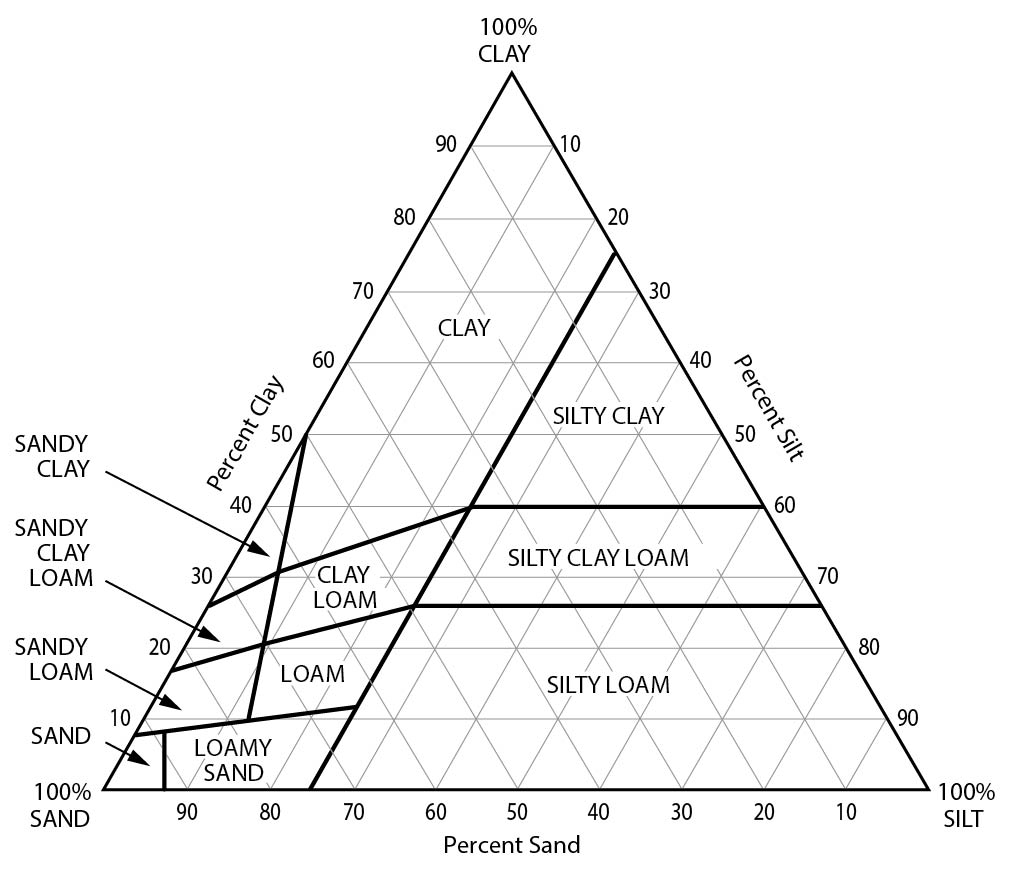Soil texture
Soil texture (such as loam, sandy loam or clay) refers to the proportion of sand, silt and clay sized particles that make up the mineral fraction of the soil.
For example, light soil refers to a soil high in sand relative to clay, while heavy soils are made up largely of clay.


Texture is important because it influences:
- the amount of water the soil can hold
- the rate of water movement through the soil
- how workable and fertile the soil is.
For example, sand is well aerated but does not hold much water and is low in nutrients. Clay soils generally hold more water, and are better at supplying nutrients.
Texture often changes with depth so roots have to cope with different conditions as they penetrate the soil. A soil can be classified according to the way the texture changes with depth. The 3 profile types are:
- uniform—same texture throughout the soil profile
- texture-contrast—abrupt texture change between the topsoil and subsoil
- gradational—texture gradually increases down the soil profile.
How to determine soil texture
- Take about 2 tablespoons of soil in one hand and add water, drop by drop, while working the soil until it reaches a sticky consistency.
- Squeeze the wetted soil between thumb and forefinger to form a flat ribbon.
- Determine the texture based on the length of the ribbon that can be formed without breaking—see following table.
Texture | Length of ribbon (mm) | Soil properties and management implications |
|---|---|---|
Sandy | <15 |
|
Sandy loam | 15–25 |
|
Loam | 25 |
|
Silty loam | 25 |
|
Clay loam | 40–50 |
|
Clay | 50–75 |
|
Heavy clay | >75 |
|
Source: Soil Constraints and Management Package


